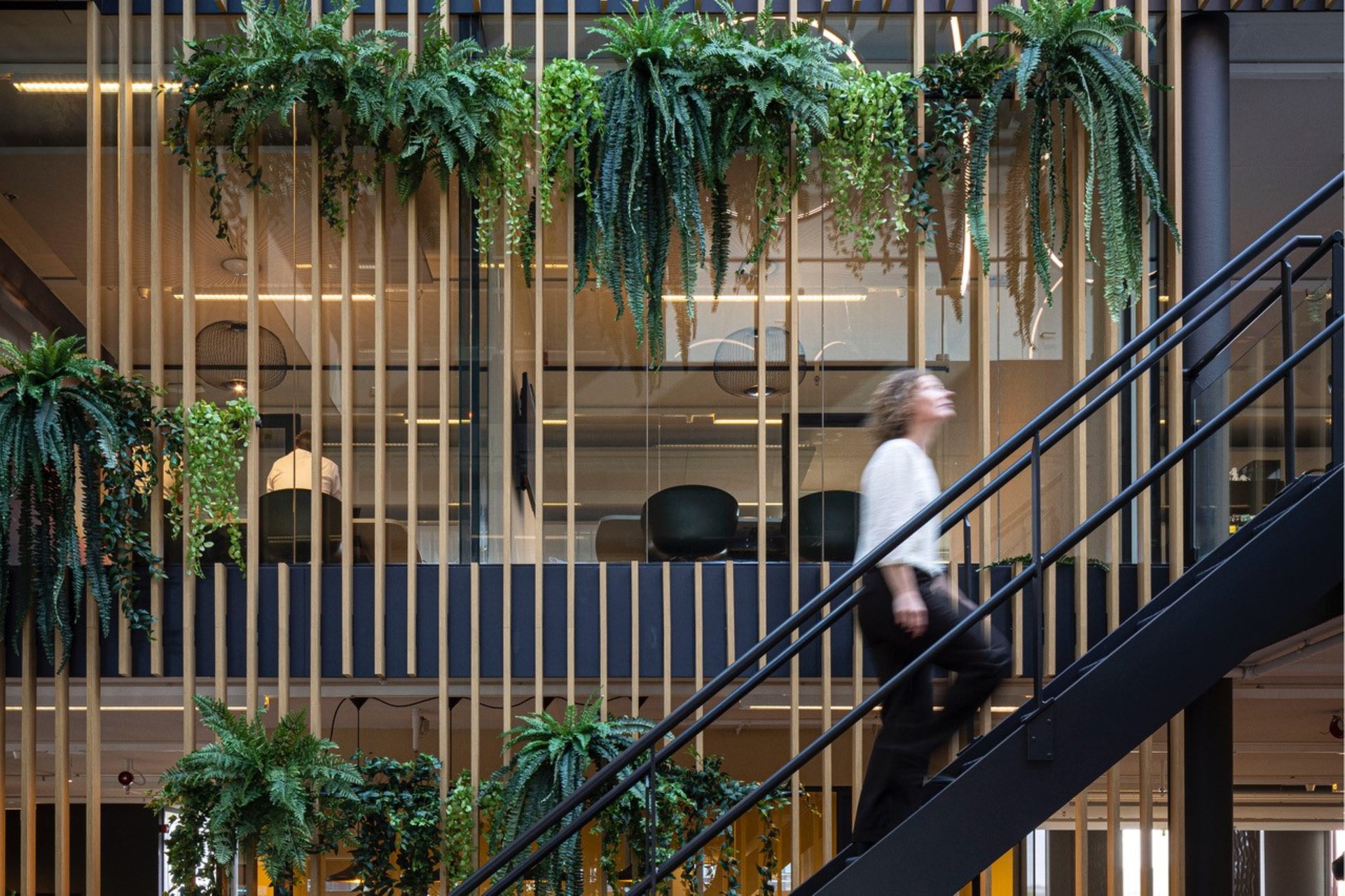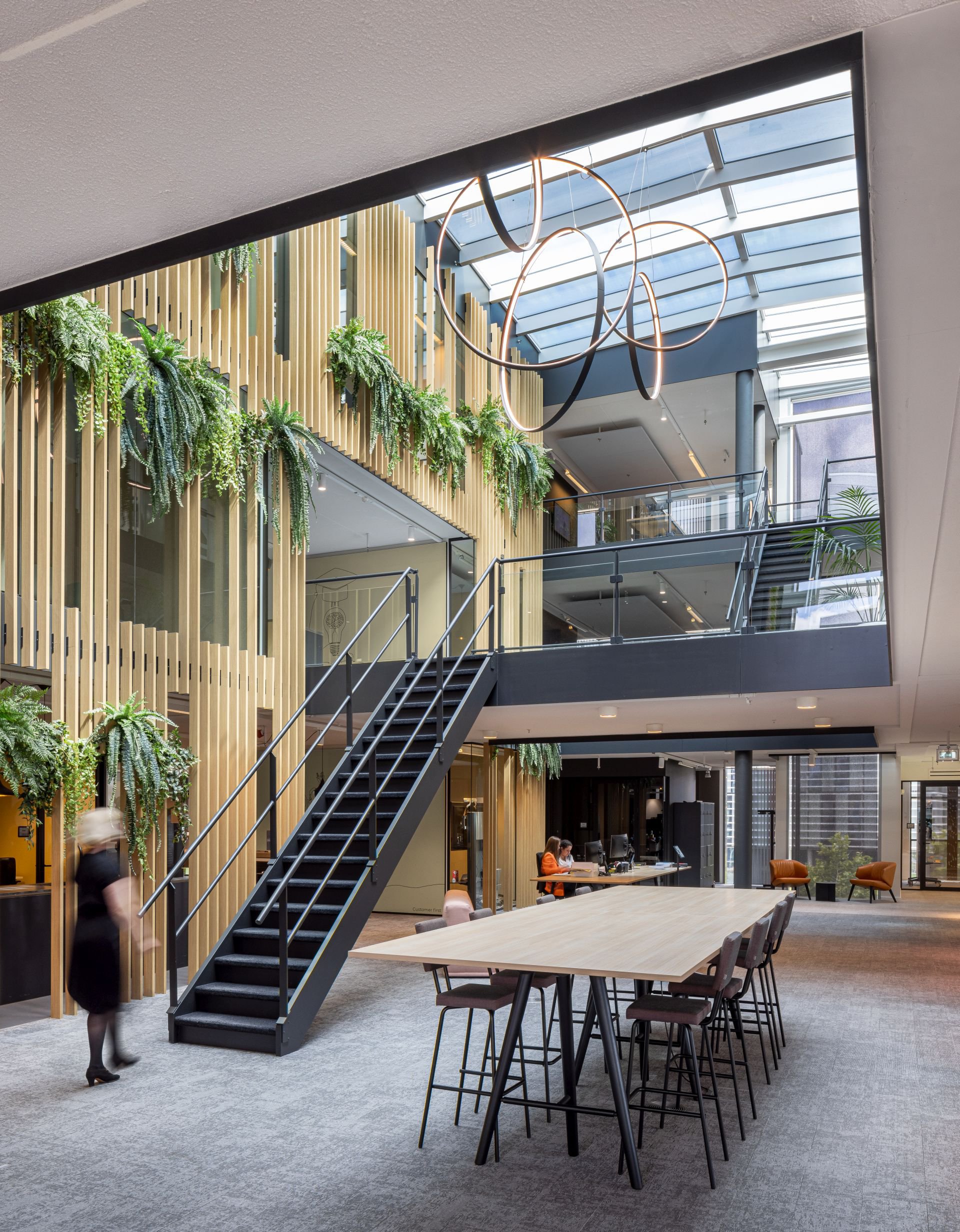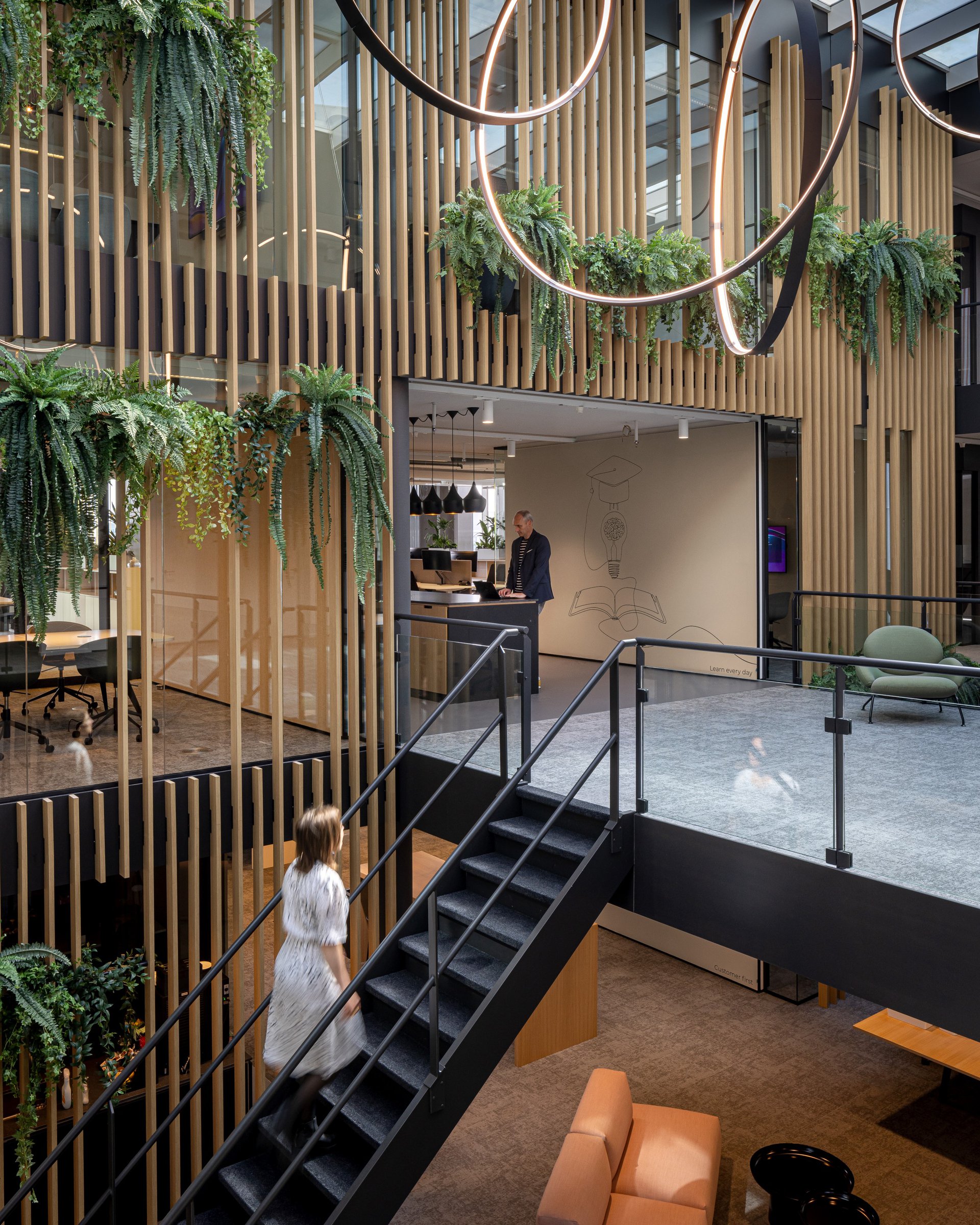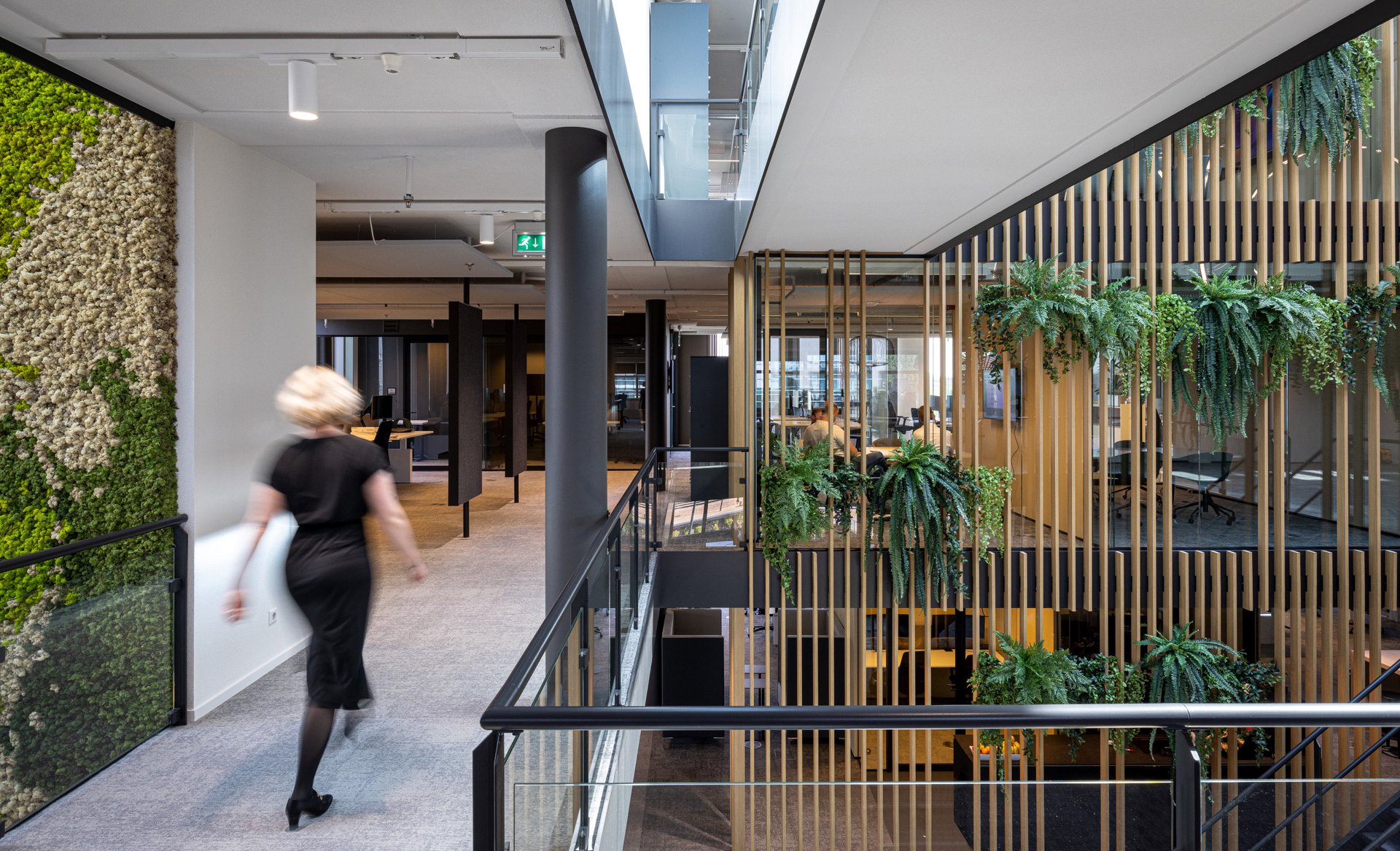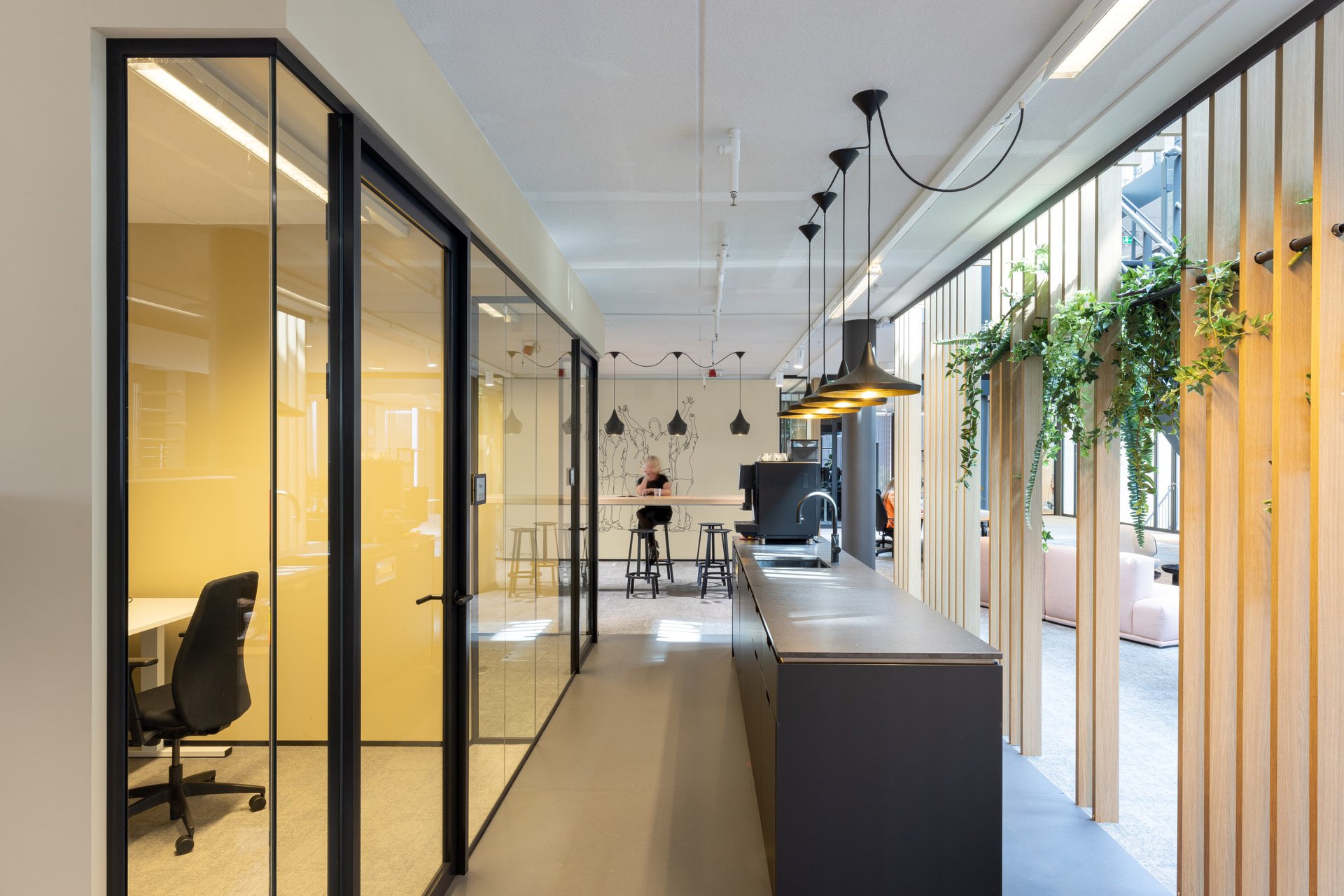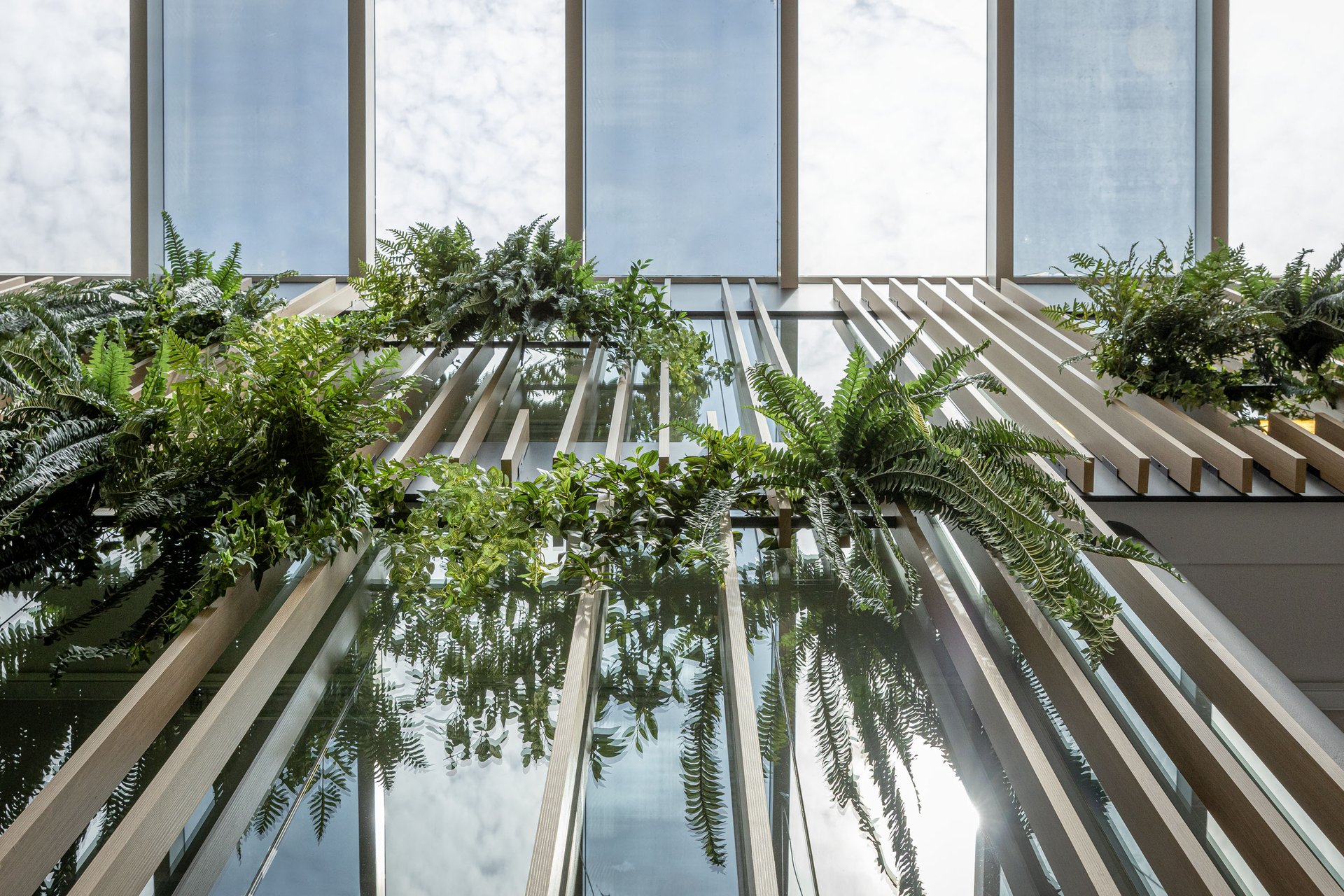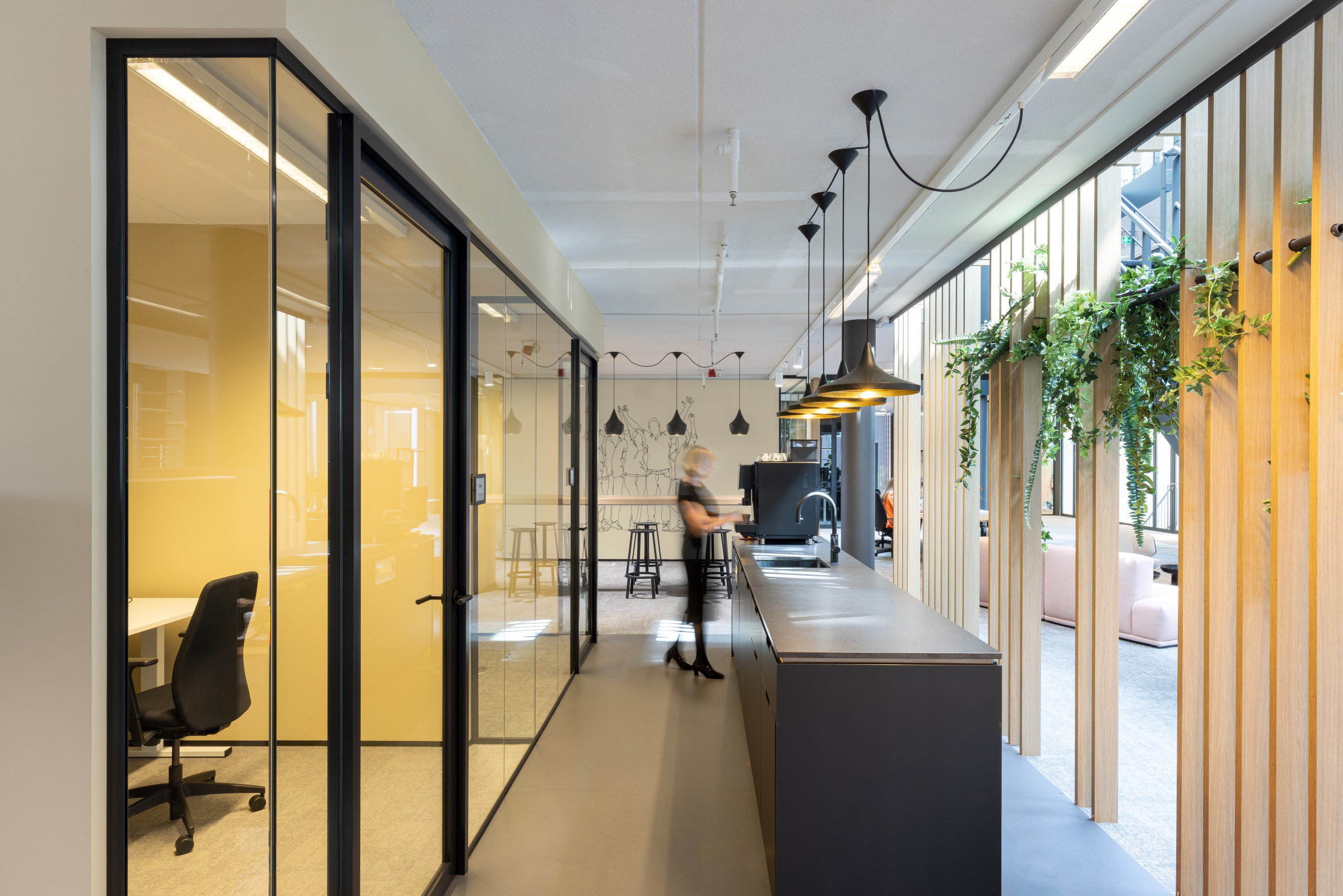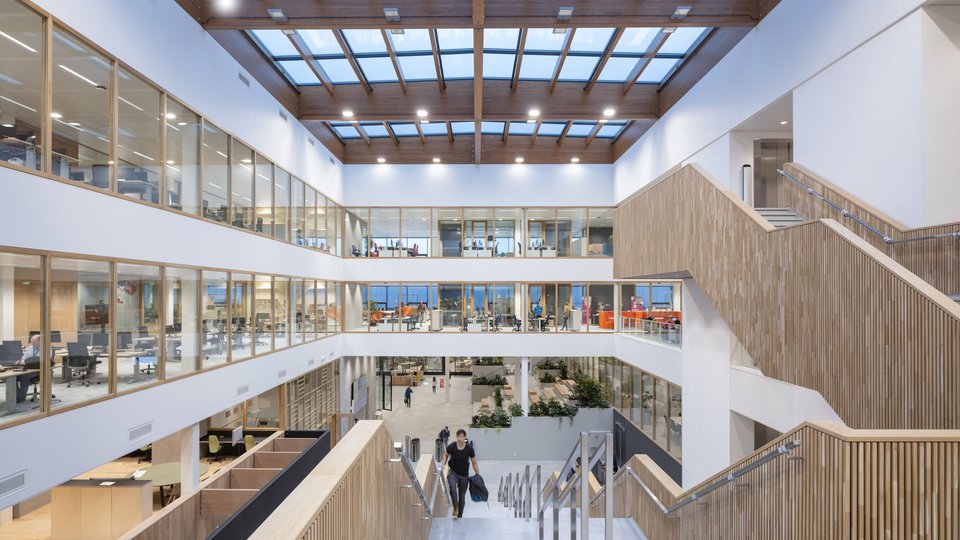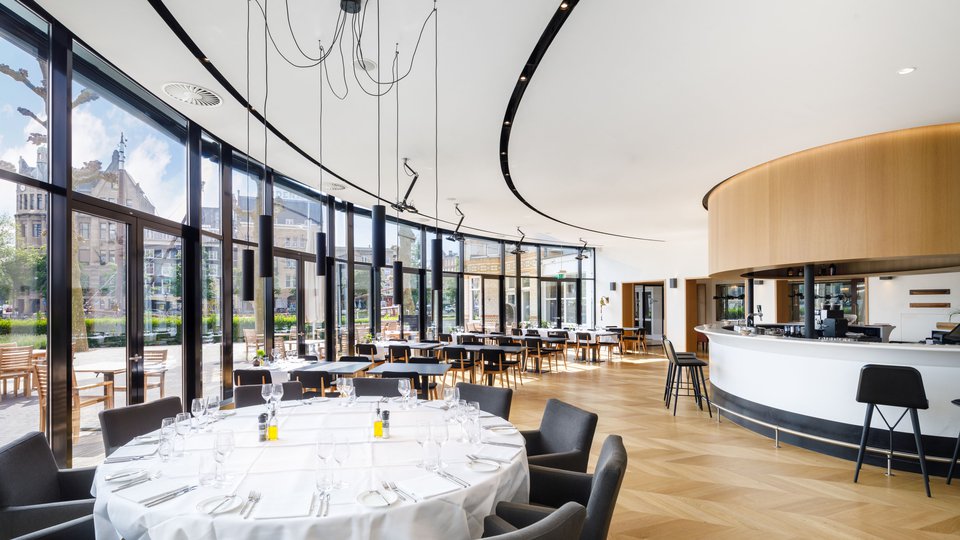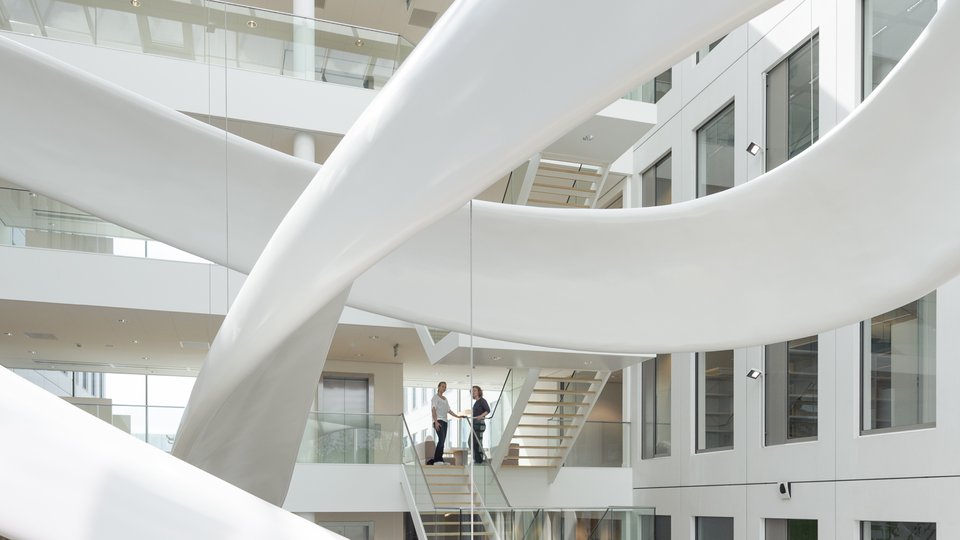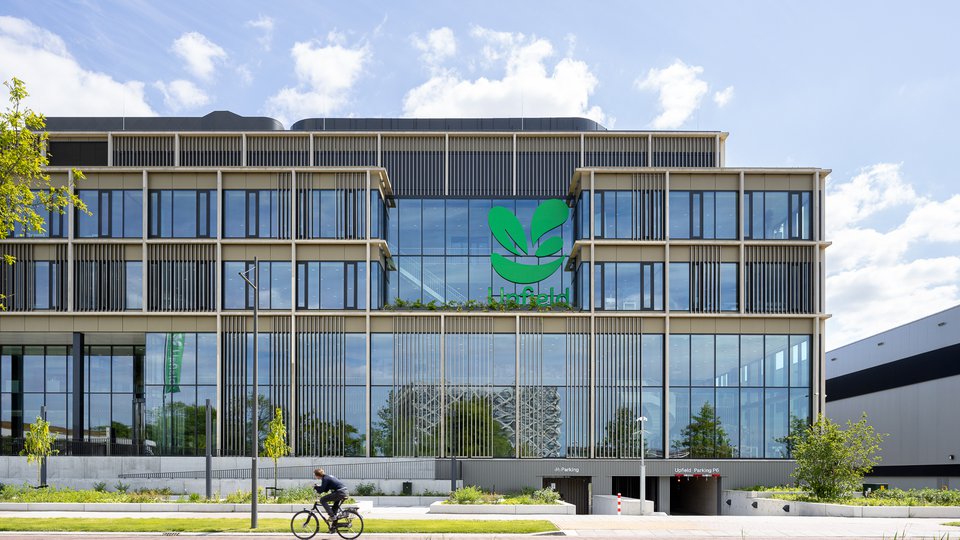| Client | HeadFirst Group |
| Location | Hoofddorp |
| Square | 1.847 |
| Timeline | May 2021- October 2021 |
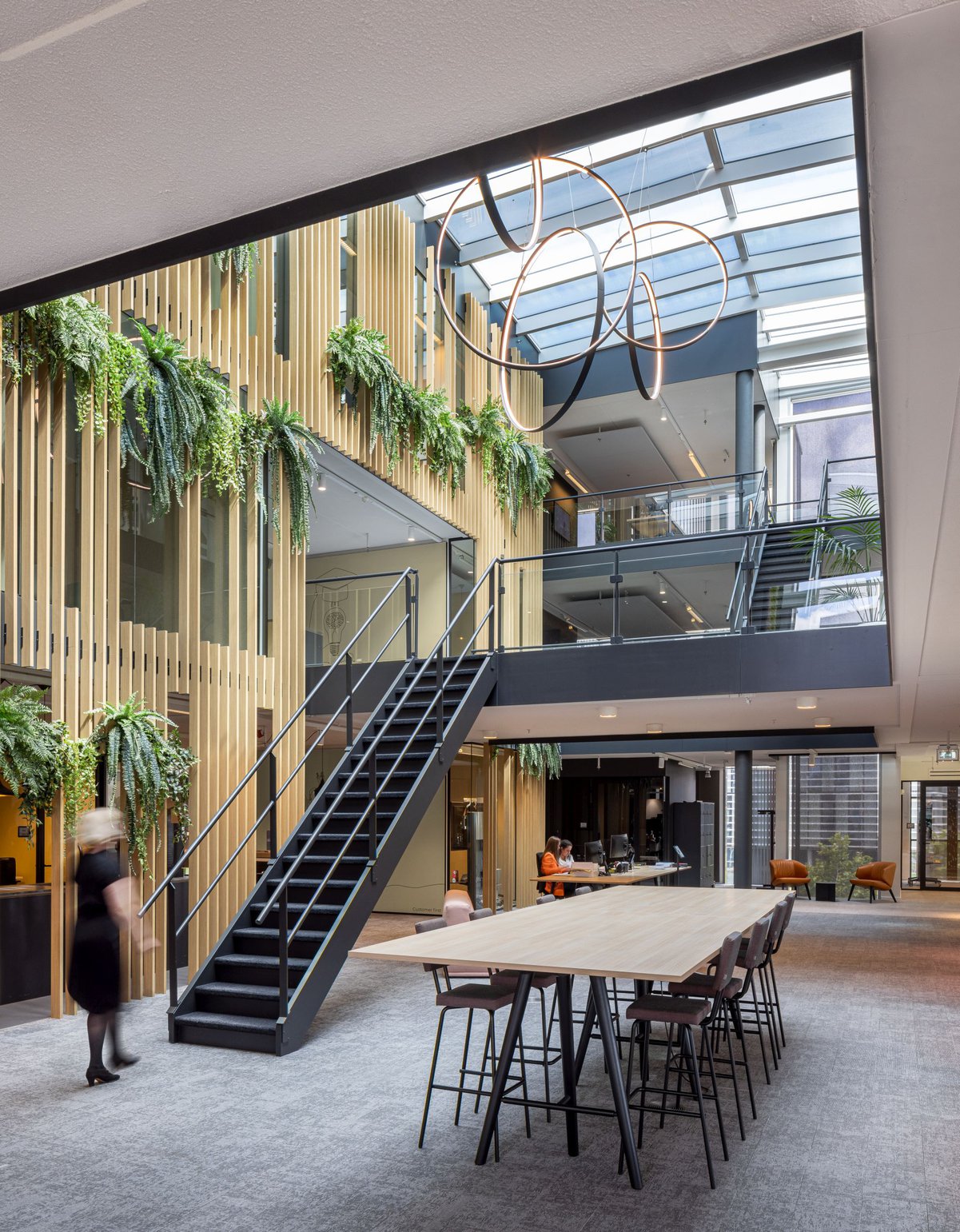
Maximum effect within the given context
Fokkema & Partners already knew the building because we also designed part of the interior for the previous tenant, the ANWB. Since we were aware of the sustainability and installation related requirements of the building, we could speed up the process.
Thanks to the existing installation concept, the building is sustainable and uses very little energy. That's great, but it also meant that we had to be creative with the limited flexibility within the given context. For example, no adjustments could be made to either floor- or ceiling. It forced us to think outside the box and make smart use of what was already there. Think of the smart positioning of functions and workplaces in combination with air inlets (from the floor), the reuse of the existing light tracks, strengthening the positioning of the pantries and the reuse of existing acoustic ceiling panels in larger, quiet areas.
The challenge is to stay connected with the team and organisation since hybrid working becomes more fluid.
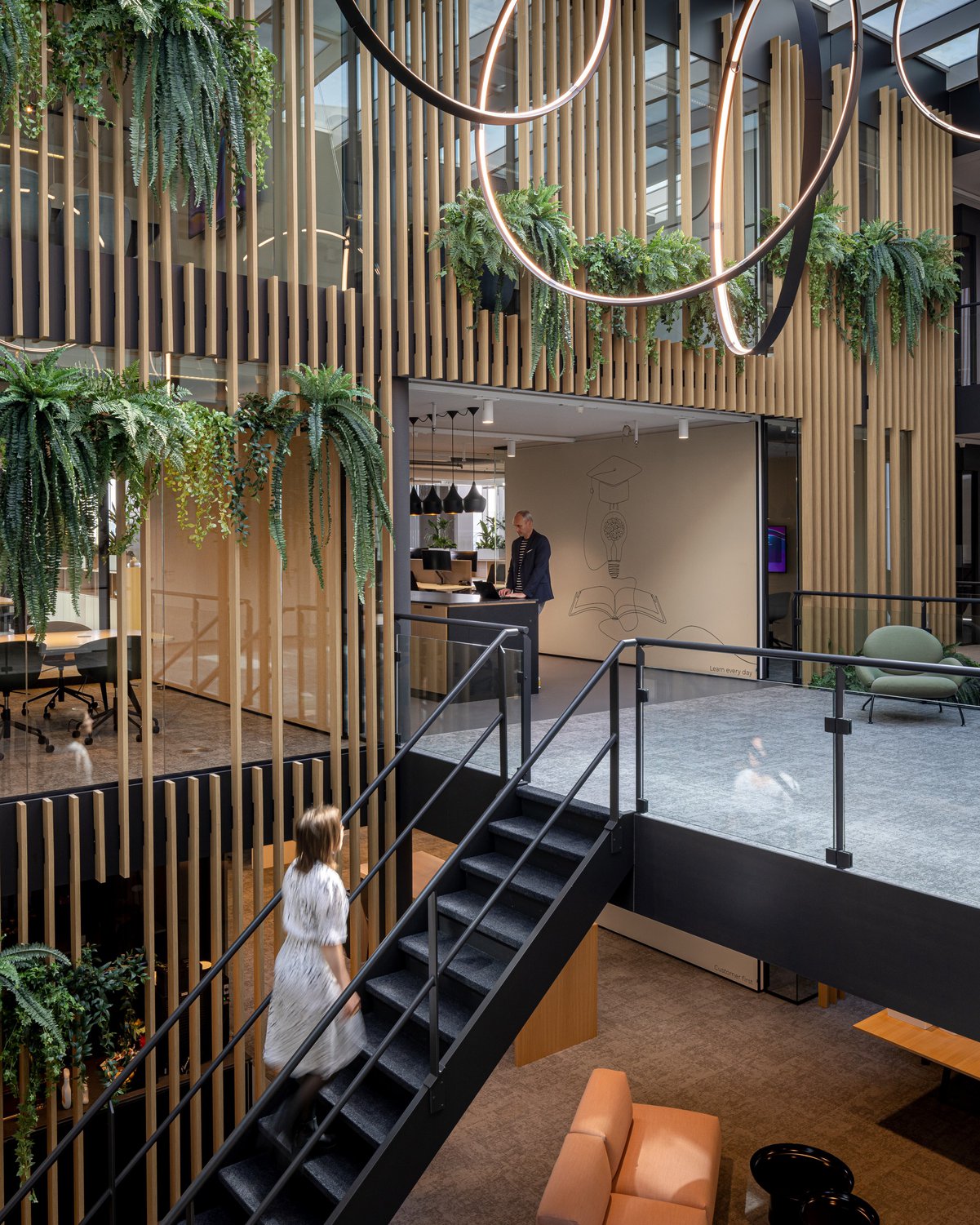
A room without a roof
We set out to create a stronger and more dynamic connection between the floors. We have done this both functionally and visually. Everything now comes together around the voids: the meeting rooms, meeting areas, reception, pantry and touchdown workplaces.
The voids also make very strong vertical connections with use of the slatted wood wall and added greenery. They are, together with the open staircases, the key design elements that connect the three floors, which provide a physical and spatial connection.
Everything is about connecting with each other and the outside world (the outside-in principle is applied here). When you enter, you have the feeling of being outside by bringing in air, light and green. Biophilia played an important role. It means 'love for living systems' and revolves around the bond between man and earth. Above you, you see the clouds moving through the glass roof. As if in a room without a roof. The sunlight causes ever-changing shadows on the floors and walls.
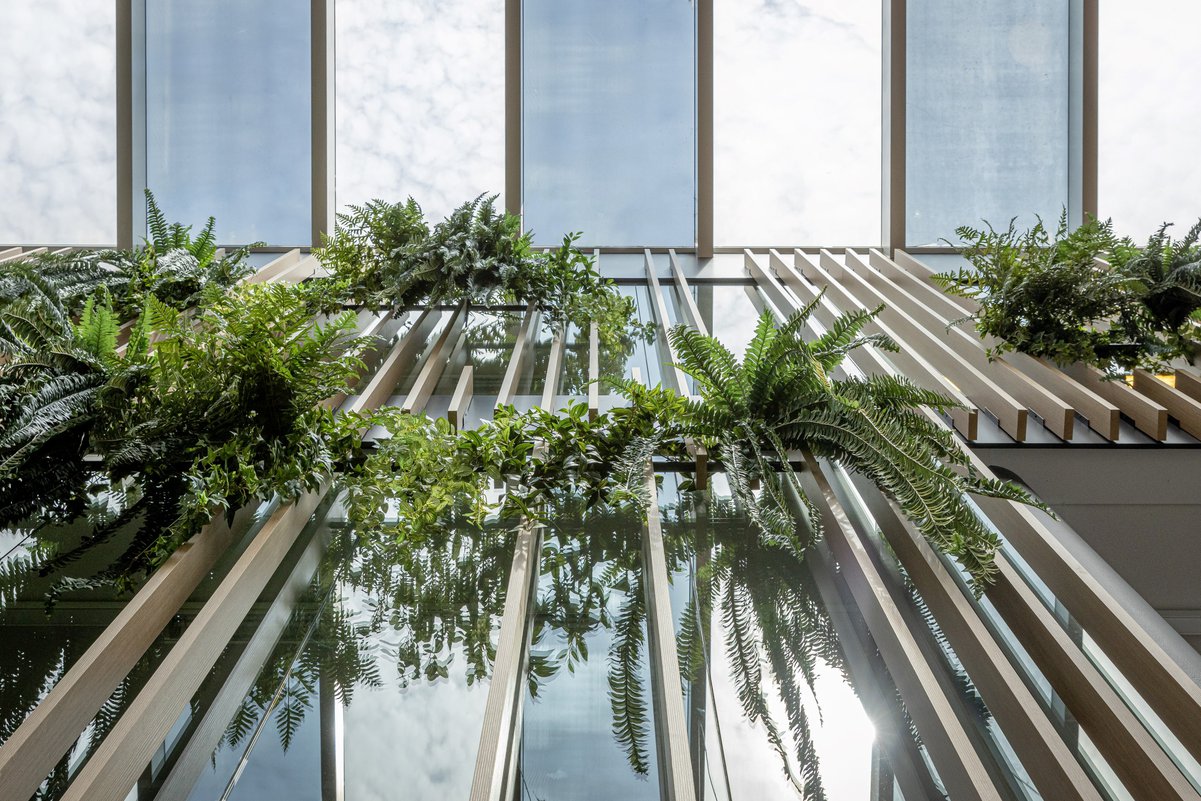
The link with nature is not only a positive experience, it also brings people wonder, energy, inspiration and creativity. Especially after COVID, it turned out that people find this even more important.
The high wooden slatted wall gives an unexpected and surprising effect. You cannot see exactly what is happening behind it. Just like in nature, the image changes continuously: through the movement of the people and the change of the light on the other side. Also because of the ever-changing perspective from which you look, the changing rhythm of the slats and the compaction and thinning of the greenery.
Photography: Lucas van der Wee
The connection that we tried to create in the design was immediately used. Even though people had been working from home for a long time, the office was directly full after completion. It has become a place where people want to be.
